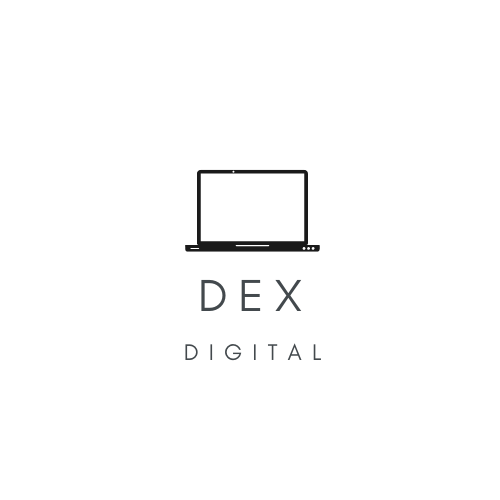
What Is Currency for Croatia? A Comprehensive Guide
Currency plays a crucial role in any country’s economy, and Croatia is no exception. Understanding the currency of a foreign country is essential for tourists and business travelers alike. In this comprehensive guide, we will delve into the basics of Croatian currency, its history, features, value, and how to use it in everyday transactions. We will also explore currency exchange and provide useful tips to ensure a smooth experience while dealing with money in Croatia.
Understanding the Basics of Croatian Currency
Before we dive into the details, let’s start with the fundamentals of Croatian currency. Croatia’s currency is known as the Croatian Kuna, denoted by the symbol “kn”. It is the official currency of the country and has been in use since 1994.
The Croatian Kuna is subdivided into 100 lipa, which are represented by the symbol “lp”. However, due to its low value, lipa coins are not commonly used in everyday transactions.
The History of Croatian Currency
To fully grasp the significance of the Croatian Kuna, we need to explore its roots. Croatia had its own currency, called the Croatian Dinar, during the time it was a part of the former Yugoslavia. However, after gaining independence in the early 1990s, Croatia introduced a new currency to assert its sovereignty and economic stability.
The decision to establish the Croatian Kuna was primarily influenced by historical and cultural factors. The name “Kuna” refers to a marten, a small mammal found in Croatia, which holds a significant place in Croatian folklore and traditions.
Legend has it that in ancient times, the marten’s fur was used as a form of currency in Croatia. The fur was highly valued for its softness and durability, making it a desirable commodity for trade. The association between the marten and currency persisted throughout history, eventually leading to the adoption of the name “Kuna” for Croatia’s official currency.
The Current Currency: Croatian Kuna
Today, the Croatian Kuna is widely accepted and used for all transactions within the country. It is issued by the Croatian National Bank, which ensures its stability and integrity.
The banknotes of the Croatian Kuna come in various denominations, including 5 kn, 10 kn, 20 kn, 50 kn, 100 kn, 200 kn, 500 kn, and 1,000 kn. Each banknote features prominent Croatian personalities, historical landmarks, or important cultural symbols.
For example, the 100 kn banknote showcases the image of Ivan Gundulić, a renowned Croatian poet from the 17th century. The reverse side of the banknote depicts the Dubrovnik city walls, a UNESCO World Heritage Site and one of Croatia’s most iconic landmarks.
These banknotes not only serve as a means of exchange but also act as a reflection of Croatia’s rich history and cultural heritage. They provide a glimpse into the country’s past and serve as a source of national pride for its citizens.
Features of Croatian Kuna
Now that we have a basic understanding of Croatian currency let’s explore some key features of the Croatian Kuna.
The Croatian Kuna, the official currency of Croatia, has a rich history dating back to its introduction in 1994, replacing the Croatian dinar. The name “Kuna” actually translates to “marten” in English, which was a valuable fur used as a form of payment in medieval times. This historical significance adds a layer of cultural depth to the modern-day currency.
Coins and Banknotes
The coins of the Croatian Kuna are available in multiple denominations, including 1 kn, 2 kn, 5 kn, and 25 lp. These coins are commonly used for small transactions and are easily accessible.
Each coin features intricate designs that showcase Croatian culture and heritage. For example, the 1 kuna coin displays the marten, paying homage to the historical roots of the currency. The 25 lipa coin, on the other hand, features the Croatian checkerboard coat of arms, a symbol of national pride.
On the other hand, banknotes are more commonly used for larger transactions. The Croatian Kuna banknotes are durable, well-designed, and equipped with security features to prevent counterfeiting.
The banknotes also highlight important figures in Croatian history and culture. For instance, the 100 kuna banknote features the image of Ban Josip Jelačić, a revered military leader and politician in Croatian history. These portraits serve as a reminder of the country’s rich heritage and the individuals who have shaped its identity.
Security Features of the Kuna
The Croatian National Bank has taken several measures to ensure the security of the Kuna. Banknotes incorporate various security features such as watermarks, holographic strips, and high-quality printing to safeguard against counterfeit activities.
Additionally, the Croatian National Bank regularly updates these security features to stay ahead of counterfeiters. Advanced technologies, such as microprinting and color-changing inks, are continuously integrated into the banknotes to enhance security measures. This ongoing commitment to innovation underscores the importance of maintaining the integrity of the Croatian Kuna.
It is crucial to familiarize yourself with these security features to avoid accepting fake banknotes inadvertently. Taking a few moments to inspect the characteristics of genuine banknotes can save you from potential financial loss.
Exchange Rates and Value of the Kuna
Understanding the exchange rates and value of the Croatian Kuna is crucial for individuals traveling to Croatia or conducting business in the country. The Croatian Kuna, symbolized as HRK, is the official currency of Croatia and plays a significant role in the country’s economic landscape.
When delving into the intricacies of the Croatian Kuna, it’s essential to consider not only its current value but also its historical performance. By analyzing trends over time, one can gain valuable insights into how the Kuna has fared against other currencies and what factors have influenced its fluctuations.
Factors Influencing the Kuna’s Value
Various elements impact the value of the Croatian Kuna, ranging from economic indicators to geopolitical events. Factors such as Croatia’s GDP growth, trade balances, and foreign investment levels all play a role in determining the strength of the Kuna in the foreign exchange market.
Moreover, the policies of the Croatian National Bank, which is responsible for regulating the country’s monetary system, can also influence the Kuna’s value. By staying informed about these factors, individuals can make more informed decisions when dealing with the Croatian Kuna.
Comparing Kuna to Major World Currencies
When comparing the Croatian Kuna to major world currencies, it’s essential to consider not only the current exchange rates but also the historical trends. Understanding how the Kuna has performed against currencies like the Euro, US Dollar, British Pound, and Japanese Yen can provide valuable insights for travelers and businesses alike.
By monitoring the exchange rates of these major currencies, individuals can assess the relative strength of the Croatian Kuna and make informed decisions regarding currency exchanges and financial transactions. This knowledge can help mitigate risks and optimize financial planning strategies when dealing with the Croatian Kuna.
Using Currency in Croatia
Now that we have covered the basics of Croatian currency, let’s explore how to use it effectively during your time in Croatia.
When it comes to currency in Croatia, it’s not just about the kuna. While the official currency is the Croatian kuna (HRK), some establishments in tourist-heavy areas may also accept euros. However, it’s always advisable to have some kuna on hand for smaller purchases or places that may not accept foreign currency.
Cash vs. Card Transactions in Croatia
In Croatia, both cash and card transactions are widely accepted. However, it is a good practice to carry some cash with you, especially when visiting smaller establishments, remote locations, or outdoor markets where card payments may not be available.
For those who prefer the convenience of card payments, most major credit and debit cards are accepted in Croatia. It’s worth noting that contactless payments are becoming increasingly popular, so make sure your card has this feature for added convenience.
Major credit and debit cards are accepted in most establishments, but it is recommended to inform your bank about your travel plans to avoid any inconveniences related to card security measures.
Tips for Handling Money in Croatia
To make your financial transactions in Croatia smoother, here are a few tips:
- Keep a mix of smaller and larger denominations to accommodate different transaction amounts.
- Carry a secure wallet or purse to protect your cash and cards.
- Use ATMs to withdraw cash, preferably from well-known banks, and be aware of any associated fees.
- Be cautious and alert when exchanging money or conducting financial transactions with unfamiliar individuals or establishments.
Additionally, it’s worth mentioning that tipping in Croatia is not obligatory but is appreciated for good service. A typical tip ranges from 10% to 15% of the total bill, but feel free to round up the amount or leave a small tip for exceptional service.
Currency Exchange in Croatia
If you need to exchange your currency for Croatian Kuna, there are several options available throughout the country.
When it comes to currency exchange in Croatia, it’s important to know where to find the best places to exchange your money. Official exchange offices, commonly known as “mjenjačnica,” can be found in most tourist areas, airports, and major cities in Croatia. These establishments usually offer competitive exchange rates and provide a secure environment for currency exchange.
But how do you choose the right exchange office? Well, there are a few things to consider. First, look for ones that prominently display their exchange rates. Transparency is key when it comes to currency exchange. Additionally, it’s always a good idea to check reviews from past customers to ensure that the exchange office has a positive reputation.
Furthermore, comparing rates and fees across different establishments can help you get the best value for your money. Exchange rates can vary between establishments, so taking the time to do a little research can go a long way in maximizing your currency exchange.
Understanding Exchange Rates and Fees
Having a basic understanding of exchange rates and fees is essential when exchanging your currency for Croatian Kuna. Exchange rates can fluctuate, so it’s important to compare rates and opt for places that offer competitive rates.
In addition to exchange rates, it’s crucial to be aware of any commission or fees charged by the exchange office. Some establishments may charge a small percentage or a fixed fee for exchanging your currency. These costs should be factored into your transaction to ensure you have a clear understanding of the total amount you’ll receive.
By keeping these tips in mind, you can ensure a smooth and hassle-free currency exchange experience in Croatia. Whether you’re a tourist exploring the stunning Adriatic coastline or a business traveler attending meetings in Zagreb, having the right knowledge about currency exchange can make a significant difference.
So, before you embark on your Croatian adventure, take the time to familiarize yourself with the currency exchange landscape. Stay informed about exchange rates, compare rates and fees, and be prepared to make the most of your money during your time in this beautiful country.
In Conclusion
Understanding the currency of a foreign country is crucial when planning a trip or conducting business. In this comprehensive guide, we have explored the basics of Croatian currency, its history, features, value, and how to use it effectively during your time in Croatia.
Remember to stay informed about exchange rates, carry a mix of cash and cards, and be cautious when handling money. By following these guidelines, you can navigate the Croatian currency landscape with confidence and make the most of your experience in this beautiful country.
So, whether you’re strolling through the charming streets of Dubrovnik, exploring the ancient ruins of Split, or enjoying the vibrant nightlife in Zagreb, you can rest assured knowing that you have the knowledge to handle your currency exchange needs in Croatia.






